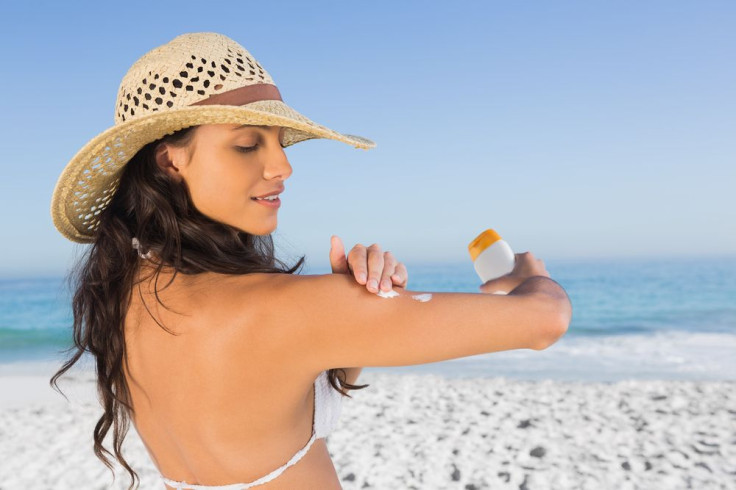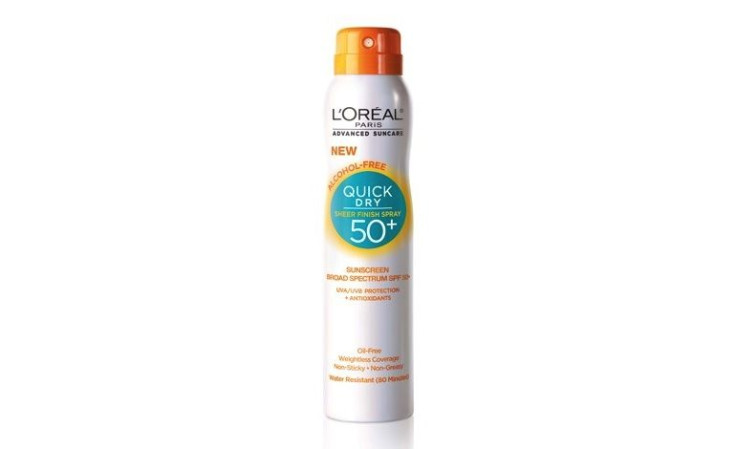
With summer around the corner, it is important to brush up on skin care protection and how to apply sunscreen -- especially for Latinos, who are often more at risk due to having a lower incidence of skin cancer.
Research has shown that once diagnosed with melanoma, Hispanics have poorer survival outcomes than their non-Hispanic white peers. The reason being is that Hispanics are often diagnosed at a later stage. Scientists believe that a late diagnosis is a direct result of less access to care, less awareness of skin cancer, or a combination of both factors.
"As a local Miami dermatologist, I cannot tell you how many unfortunate cases I’ve encountered of our very own Hispanic community members that just simply lack the knowledge about melanoma," said Consulting Dermatologist for L’Oréal Paris, Dr. Flor Mayoral, to the Latin Times. "There is a tremendous need for education."
Contrary to popular belief, Hispanics are not resistant to skin cancer and some studies have even found an increase in melanoma among Hispanics. One study in particular found that the incidence of melanoma in the Hispanic community has increased by 19 percent from 1992 to 2008.
According to Dr. Mayoral, Hispanic women (23 percent) continue to grade themselves a D or F when it comes to knowledge of proper suncare, 58 percent of Hispanic women believe they should wear sunscreen regularly but only 35 percent actually do so and less than 17 percent of Hispanic women think melanoma is in their future.
"I get it -- culturally, we didn’t grow up with our parents proactively making us apply and reapply sunscreen," adds Dr. Mayoral. "Coming from countries in the Caribbean and Latin America, SPF was never a topic of conversation. However, wearing sunscreen is a must in order to prevent melanoma. It is so simple and easy, and should be part of everyone’s daily beauty regimen."
Here are eight tips you need to know about skincare protection:
1. It's important to have broad spectrum protection. So here is how it works: the sun emits ultraviolet A (long-wave) and ultraviolet B (shortwave) rays which have different wavelengths but both can cause premature skin aging, eye damage and skin cancers. As such, it's important to look not only for the SPF but also for broad spectrum coverage -- which means the sunscreen will protect your skin from both UVA rays and UVB rays -- when purchasing a sunscreen.
2. There's not much difference between SPF 45 and SPF 100. Most people believe that the higher the SPF -- which stands for Sun Protection Factor and measures for UVB protection -- the more protection you receive. But the truth is that a product with SPF 15 blocks roughly 94 percent of UVB rays; an SPF 30 product blocks 97 percent of UVB rays; and a sunscreen with SPF 45 blocks about 98 percent of rays.
3. You should be wearing sunscreen every single day — even in the winter. Sunscreen is synonymous with the summer, so people often don't know that you are supposed to wear it year round. The sun's UV rays do not disappear in the winter and those who partake in winter sports should especially be vigilant in applying sunscreen.
4. Apply a thick layer. Exactly how much sunscreen you should be using is often hard to determine, but the general rule of thumb is one tablespoon for your face and two ounces for your body. If you don't apply enough sunscreen, then you're not reaping the benefits of a higher SPF product. For hard to apply areas, consider a sun screen spray like the L'Oreal Advanced Suncare Quick Dry Sheer Finishing Spray.

5. Apply sunscreen 20 minutes before going into the sun. With chemical sunscreens, the product needs to be absorbed into the skin in order to do its job so be sure to apply your sunscreen 20 minutes before coming in contact with sunlight and reapply every 90 minutes.
6. Order of Operations: Generally speaking, applying sunscreen directly to your skin is the best technique. But if your product has zinc oxide or titanium dioxide sunscreen -- minerals that work faster than other ingredients -- then you can layer it last.
7. What type of sunscreen is best? Sunscreens now come in many different formulas and while anything is better than nothing, there are some formulas that are better for certain parts of your body. For instance, a cream-based sunscreen is ideal for your face and dry skin and a gel-based product is better for areas with hair (i.e. male chest or scalp). A sunscreen stick is a great way to apply the product around your eyes.
8. Nail salons can put you at risk. In most nail salons, the consumer has the option to dry their nail varnish under an ultraviolet (UV) lamp, which emits the same skin-damaging light that can cause cancer. Taking into consideration that, for many, getting a manicure is a weekly ritual, the outcome could be devastating. A new report from journal JAMA Dermatology has found that as few as 24 visits to the nail salons (and as high as 625) can trigger cancer-causing damage. What's the solution? Consider taking a broad-spectrum sunscreen and having your manicurist apply it before painting your nails or investing in UV-protective gloves.
© 2024 Latin Times. All rights reserved. Do not reproduce without permission.
